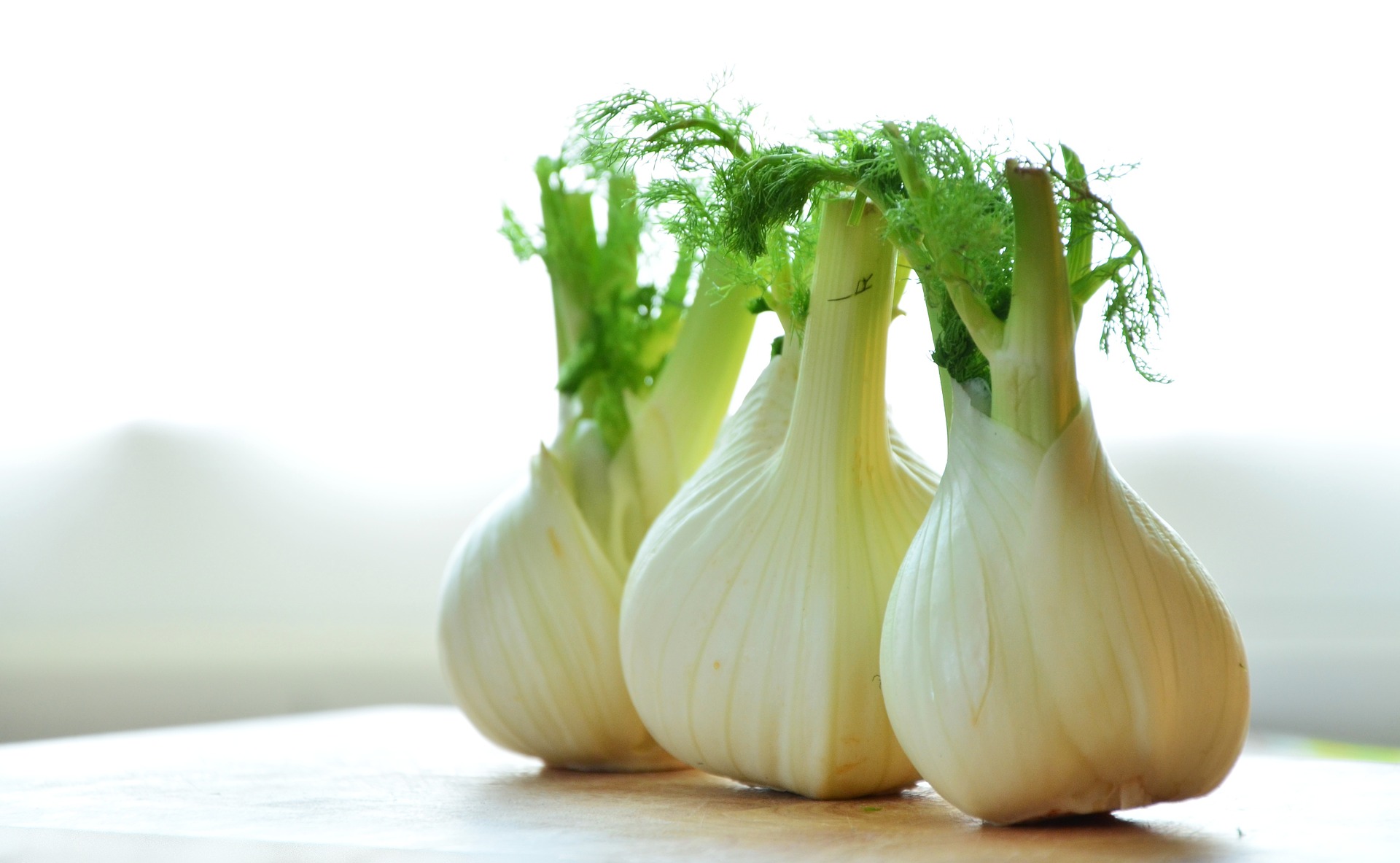Both the plants and the seeds look awfully alike. Let’s find out the difference between fennel and anise.
- Fennel: a plant, Foeniculum vulgare, of the parsley family, having feathery leaves and umbels of small, yellow flowers; also, fennel seed, the aromatic fruits of this plant, used in cookery and medicine.
- Anise: a Mediterranean plant, Pimpenella anisum, of the parsley family, having loose umbrels of small yellowish-white flowers that yield aniseed.
And,
- Aniseed: the aromatic seed of anise, the oil of which (anise oil, aniseed oil, oil of anise) is used in the manufacture of anehtole, in medicine as a carminative and expectorant, and in cookery and liqueurs for its licoricelike flavor.
As we can see right away, both fennel and anise belong to the parsley family, also known as the Apiaceae family. Both plants are related to licorice, tarragon, carrots, celery, caraway, and others.
The main difference between the two, is that fennel is more so considered to be a vegetable, while anise is a spice – this is because more of the fennel plant is edible than the anise plant.
The anise plant’s seeds are typically the only part of the plant that is consumed. With fennel, the seeds, leaves, stems, and bulbs can all be enjoyed.
Let’s begin with fennel.
The fennel plant is subdivided into two categories: Florence fennel and sweet (or common) fennel. Florence fennel is grown for its bulbs and is eaten as a vegetable. Sweet fennel is used for its herb-like leaves and seeds.
Florence fennel is crunchy, and just a tiny bit sweet. The bulb can be eaten raw in a salad, or it can be grilled, braised, etc. When cooked, the bulbs are similar to leeks, although milder and less onion-like.
The fronds of sweet fennel can be chopped and used as a garnish, while the stems can add flavor to broths or sauces.
Fennel seeds are typically used to flavor sausage and pork dishes. They’re also a great addition to certain breads, stews, or pasta sauces. Fennel have that faint licorice-like taste to them.
Medicinally, fennel seeds and the bulb are used as an anti-inflammatory, to treat stomachaches, or as a diuretic.
With anise, the seed, or aniseed, is used to give a kick to baked goods or other desserts; it is also frequently found in alcoholic beverages, such as sambuca. Like fennel, anise has a slight licorice feel to it.
Medicinally, anise is consumed to treat coughs, excessive gas, and it is used as a breath freshener.
The anise plant can grow to 18 inches tall and has small clusters of white flowers. Comparatively, the fennel plant can grow quite tall, up to five feet, and when it goes to seed the flowers are yellow.
Some people make think of the star anise when they hear of the spice – also called Chinese anise – but this is actually from a different plant family.
In conclusion, fennel and anise are closely related, and look similar in their “vegetable” form. However, anise is almost always used only for the seeds, as a spice. Fennel can be used as both a spice and a vegetable.
According to World’s Healthiest Foods, anise plants have frequently been mislabeled as fennel. If you see an vegetable-like anise plant for sale, it’s likely to actually be fennel.
Both fennel and anise seeds have a sharp, sweet taste reminiscent to licorice, and both can be used for medicinal purposes.

Comments
2 responses to “Difference between: fennel and anise”
In my supermarket they have mistaken fennel bulb for anise the front on it looks like dill can I correct the produce manager
There is also fennel the herb which is a four to five foot plant that doesn’t make a bulb like sweet fennel. You can use the seeds and the leaves as well. In my zone 6, it comes back every year.